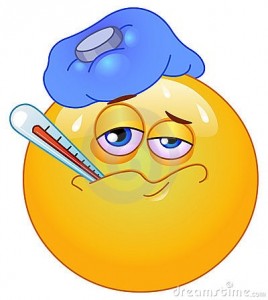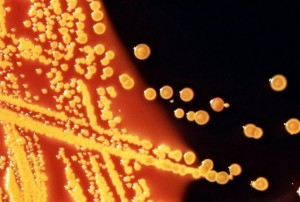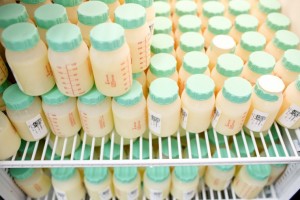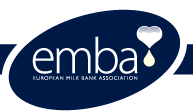Just last Friday on October 16th, news outlets have published an article about a recent outbreak on Salmonella, with reports starting from June 12, 2015. The Salmonella outbreak has spread over the country in 8 provinces by the 20th of September with the most cases reported in Ontario. Other provinces include British Columbia, Alberta, Saskatchewan, Manitoba, Nova Scotia, New Brunswick, and Quebec. Luckily, there has been no reported deaths.
The source of outbreak is still unknown as of today, however many common food carriers of Salmonella pathogens include: poultry and poultry products (ex. eggs), beef, pork, nuts, and produce (ex. fruits and vegetables.
A Study has shown that Salmonella can be a tricky pathogen as it can become resistant to standard sterilization procedures in food industries through cross-protection. Cross-protection occurs when a pathogen experiences sub-lethal conditions—in which it develops resistance to harsh environments—followed by conditions that would have otherwise killed it (Fong, 2015). In the case of Salmonella, lethal conditions include but are not limited to: pH <6.5, temperature>70 degrees Celsius, and water activity <0.93.
This means that Salmonella can be found not only on food sources, but surviving on surfaces that have come into contact with the contaminated products! It is a very versatile pathogen, which means that the source of outbreak could be identified in any step of the food chain:
- Agricultural Sector
- Manufacturing/processing Sector
- Distribution and Transportation Sector
- Retail Sector
- At home/restaurants in which the foods are prepared and consumed
 Salmonella can cause symptoms within 6-72 hours of ingestion. Common symptoms include: fever, chills, diarrhea, abdominal cramps, headache, nausea, and vomiting which can last 4-7 days. In more severe cases, such as for those with compromised immune systems, are elderly, or are children, may have to be hospitalized and in the worst case scenario, death may occur. In some cases, people may be asymptomatic and spread the bacteria onto others by not practicing hygienic procedures (handwashing, keeping equipment clean, etc.). (Public Health Agency of Canada, 2015).
Salmonella can cause symptoms within 6-72 hours of ingestion. Common symptoms include: fever, chills, diarrhea, abdominal cramps, headache, nausea, and vomiting which can last 4-7 days. In more severe cases, such as for those with compromised immune systems, are elderly, or are children, may have to be hospitalized and in the worst case scenario, death may occur. In some cases, people may be asymptomatic and spread the bacteria onto others by not practicing hygienic procedures (handwashing, keeping equipment clean, etc.). (Public Health Agency of Canada, 2015).
This outbreak is a very curious incident as it has spread so far across the country, yet the source(s) is/are not pinpointed to exact foods or modes of process/transportation. With the largest cases found in Ontario and incidences tapering off towards the west, it would seem that the source of outbreak would be from the east. However there may also be a chance that the outbreaks are due to improper food handling methods at home. Another interesting finding is that over half of the effected are female.
With such a large difference of outbreaks between the east and west, could there be a difference between provinces for public education in food handling procedures? Could there be any meaning behind why half of those affected were women?
Before this reported outbreak, there had been another in January 2015. These incidents have been identified rather quickly. However there is an ongoing debate about whether inspection has become quicker and well executed, or if the increased frequency in outbreaks is due to recent cuts in finance for CFIA. More about the cuts can be read on from this article.
What other underlying factors contribute to outbreaks?
How should industry procedures change in order to minimize the effect of cross-protection?
In addition, this link is very helpful with explaining the bacteria and names some organizations involved in food safety for those of you who are looking at the policies currently in place for protecting consumers.
Any related and passionate comment is welcome!
Works cited:
Public Health Agency of Canada. 2015. http://www.phac-aspc.gc.ca/fs-sa/phn-asp/2015/salm-0628-eng.php
Image obtained on October 19, 2015 from http://thumbs.dreamstime.com/thumblarge_1666/16666999.jpg
Fong, K. 2015. Environmental adaptation and stress response of Salmonella enterica in peanut oil, peanuts, and chia seeds. University of British Columbia.



 Numerous studies have specifically examined the survival and growth of E. coli on leafy vegetables. For instance, Parker et al. (2011) demonstrated E. coli’s “ability to multiply in the phyllosphere of whole lettuce plants” on shredded and intact harvested lettuce leaves, due to an up-regulation of genes involved in oxidative and osmotic stress, which also make the bacteria more resistant to antimicrobials commonly used in the fresh-cut produce industry. Therefore, the food industry needs to implement more effective strategies in handling raw vegetables.
Numerous studies have specifically examined the survival and growth of E. coli on leafy vegetables. For instance, Parker et al. (2011) demonstrated E. coli’s “ability to multiply in the phyllosphere of whole lettuce plants” on shredded and intact harvested lettuce leaves, due to an up-regulation of genes involved in oxidative and osmotic stress, which also make the bacteria more resistant to antimicrobials commonly used in the fresh-cut produce industry. Therefore, the food industry needs to implement more effective strategies in handling raw vegetables.






